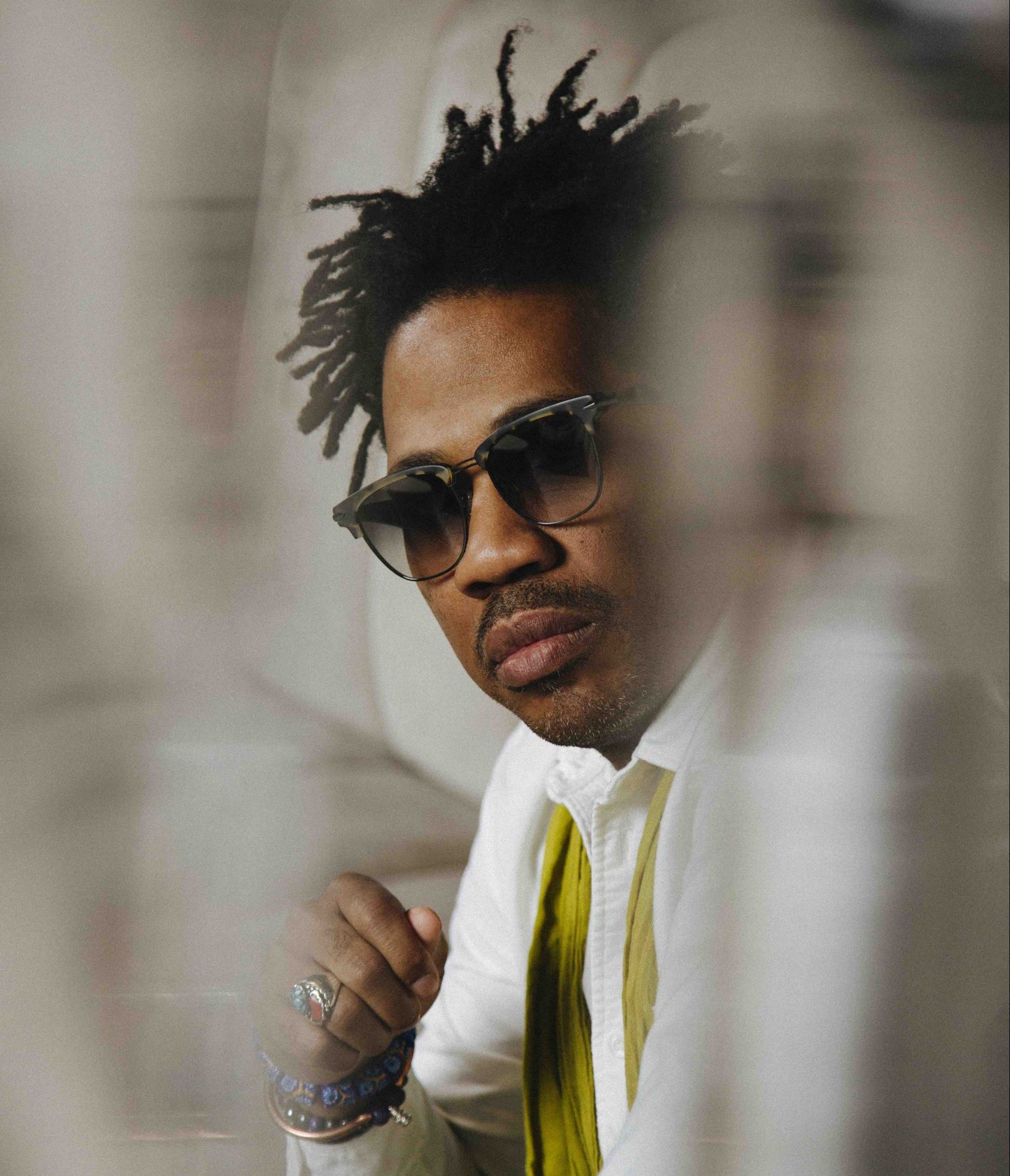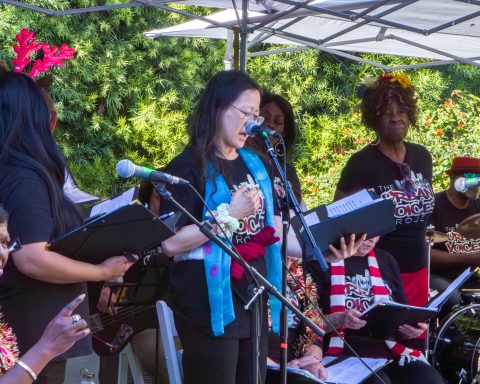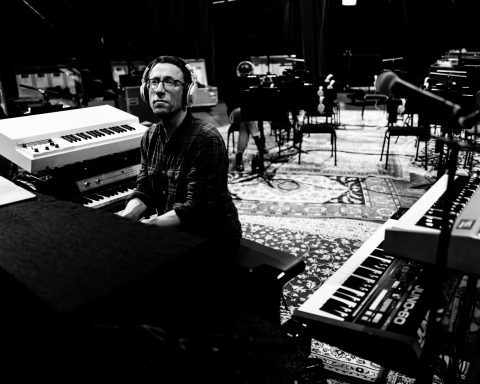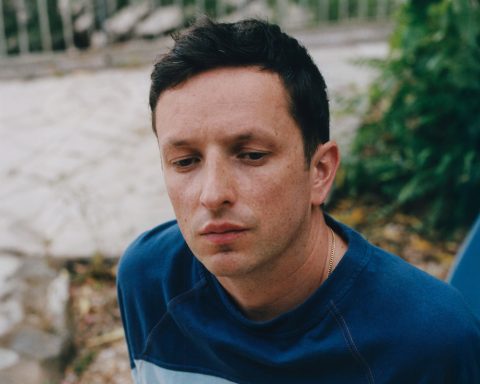Ron Trent is a house music legend—this is a pure, undisputed fact. Since releasing the seminal “Altered States” as a teen in Chicago, he’s never stopped moving and growing. Trent’s multifaceted output and lengthy discography are testaments to this. His latest release, What do the stars say to you, is another forward step in a career filled with life-affirming music. The album’s sweltering beats, instrumental flourishes, and seamless sequencing establish him as a successor to Quincy Jones. Ron Trent opens up about his formative years, distinguished collaborators, and how a trio of cities shaped him.
Name Recognition
What do the stars say to you is such an evocative title. Did the name come first, or did the album develop around the phrase?
It’s like someone looking out across the city skyline while listening to music. There’s also the aspect of, “What is your destiny?” I like to work in duality. It might mean one thing to me but something else to you. That allows you to step into it as a listener—that’s what music does. I did the tune and had already developed the concept of the album and everything. It all just made sense.
Cast of Collaborators
The album features Khruangbin, Jean-Luc Ponty, and the Brazilian jazz trio Azymuth. How did these opportunities come about?
With Khruangbin, I was creating a Santana-type tune and didn’t necessarily have them in mind. Still, I related them a bit to Santana because of the Latin thing they do from time to time. My manager was like, “Why don’t we see if we can get Khruangbin?” So, I sent it to them, and they loved it. They did their version and sent it back. Then we did a composite version.
As for Jean-Luc Ponty, I created the track “Sphere” for him. As soon as I started making the chords and the sound I was like, “This is Jean-Luc Ponty.” I even did a violin solo. So, we went about the business of trying to make contact. As soon as I sent it to him, he could feel and see himself inside of it. With Azymuth, those are guys I studied for years. I’m a big fan, so it was easy.
You also present the album as the “Francois Kevorkian Mix.” Does hearing it as a single uninterrupted track create a different listening experience?
When I’m playing music for people in the club or whatever situation, it’s about telling the story. To me, it’s about a sonic journey like taking a plane or train ride. The albums I’ve always appreciated, you put them on, and they do this thing. By the time it’s done you’re on the other end of that.
We were envisioning something like Slave to the Rhythm by Grace Jones, taking it back to audiophile aficionado listening, where you can put it on and let it run.
"When I'm playing music for people in the club or whatever situation, it's about telling the story. To me, it's about a sonic journey like taking a plane or train ride."
The Collective Process
What was the recording process like this time out?
It was all recorded remotely. I’d send stems to collaborators to play on top of and they sent them back. But everything was done in my studio in Chicago. For the Francois Kevorkian mix, I was in the studio with him the whole time. We came up with interludes between actual tracks and created this painting of one scene with sonic travels.
Does Ron Trent presents WARM represent a collective of musicians?
WARM as a concept is a band. That’s how I was thinking about it. I did this album called Cinematic Travels (Ancient/ Future) some years ago and wanted to do a live performance-type situation but didn’t get to actualize it. Now, I was able to flesh out the concept. I was like, “We’ve got to represent this as WARM.” The idea is a full-on visual and live presentation: an immersive situation.
A Tale of Three Cities
You’ve lived in Chicago, Detroit, and New York, all places with musical histories. How did each influence you?
Chicago was obviously very rich with musical context on a lot of different levels when I was coming up in the ’70s and ’80s. By the time I moved to Detroit, I was there on a recording mission. We had access to Kevin Saunderson’s studio. So we moved and it was base camp for our production, but I still had a place in Chicago. It’s not that far away.
New York was an educational experience. I was engaging with a lot of people I looked up to as producers or DJs. Also, there was a level of professionalism on an industry level. Chicago didn’t have that. We had talent in and around the city, but nothing to industrialize or to teach business acumen. That’s why you’d hear about all the infighting and the Chicago mess. Going out to New York gave me the ability to actualize my full potential.
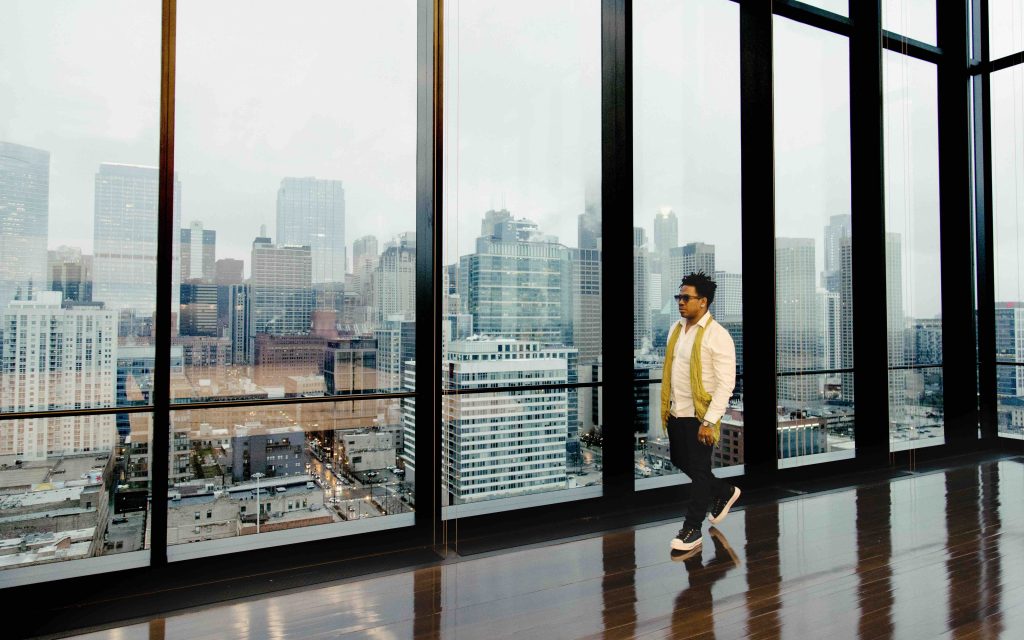
"Chicago was very rich with musical context when I was coming up in the '70s and '80s. By the time I moved to Detroit, I was there on a recording mission."
Rhythm Journey
Where did you discover your love of rhythm?
My dad was a percussionist, and he had a band in college. One of his professors was Max Roach. I grew up playing percussion and traps, mainly listening to records and playing along. That was my ear training in the ’70s. When I started creating tracks, I had a set of different rhythms. I’m one of these people that can hear and see things. Then it’s about trying to manifest that.
You’ve said Roland instruments have been part of your music for years. How do you use them?
I started my career off using Roland gear, and it’s an integral part of my whole production. Nowadays, I use more of the virtual instruments in Roland Cloud. For this album, I did all the drums on an electronic kit. I’ve been planning on buying a Roland V-Drums kit. It’s one of my goals.

Galaxy of Influences
How do you combine your love of crate digging with creating futuristic sounds?
I have a certain aesthetic; I like things that are real soulful. Record collecting is a big source of inspiration. I’ve studied a lot of people’s approaches to music. I like the early ’80s in particular, new age stuff, J Dilla. Of course, I love krautrock, and those guys were big into synthesizers. What’s interesting is that some music has synthesizers, but they’re transmitting their soul through them or using them as a mechanism for the spaceship.
"When I hear 'Altered States,' I think about those times. I remember what was going on in the city—the energy and feelings inside the track."
Tell us about remixing artists like Erykah Badu and Jill Scott.
With Jill Scott, we’re in the same constellation of people. They asked me to put a remix together for her HBO show, The No. 1 Ladies’ Detective Agency. Erykah was a long process. That took about two or three years to make happen. Once I finished it, she picked mine out of 800 remixes. Remixes are like putting together a complex puzzle. There’s a lot of nuance in arrangements and key changes. You get a chance to hear what the vocals sound like. It’s a challenge, but when it’s good, it’s well worth it.
Fresh Eyes Looking Back
What do 1990’s “Altered States” and 1997’s “Ncameu” sound like to you today?
When I hear “Altered States,” I think about those times. I created that in the ’80s so I remember what was going on in the city—the energy and feelings inside the track. There was a certain level of elegance but at the same time a rawness and avante-garde element to “Altered States.” It’s cool.
As for “Ncameu,” that’s a powerful record. There’s a lot of history and energy behind it. It has a lot of depth—from the lyrics down to the production going on at the time. We got to switch over to a lot of analog gear, you’re hearing a skill set I was coming into. My craft was developing.
